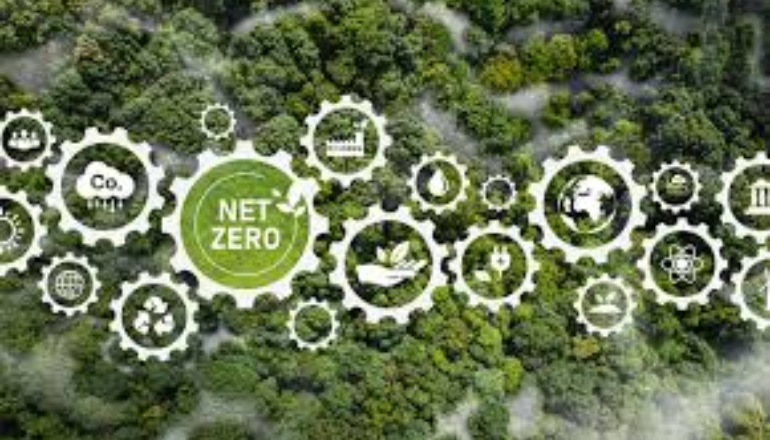Achieving net-zero requires no magic bullet.
These are the findings of a new report titled “Synchronizing energy transitions towards possible net-zero for India: Affordable and clean energy for All.”
The study aims to analyze India’s energy transition towards a net-zero energy basket, focusing on minimizing power costs and determining the optimal power mix for net-zero emissions.
Launched by IIM Ahmedabad as part of a study project sanctioned by the Office of the Principal Scientific Adviser to the Government of India with part-funding from Nuclear Power Corporation of India Ltd (NPCIL), the report is a comprehensive study, bringing together aspects from all sectors of power generation in one place, providing a holistic view of the Indian energy sector and throwing light on the potential pathways for a development-led transition to net-zero.
The objective of the study and key findings:
The objective of the study was also to address important questions regarding India’s energy trajectory. The key questions include:
- How much energy the country needs to achieve a high Human Development Index (HDI) score?
- How to get there?
- What energy mix projections are for this until 2070 (our declared net-zero target year)?
- How much electricity will cost the end user?
- How much carbon will be released until then?
- What investments will be needed for energy transitions towards net-zero in 2070?
- An estimate of other opportunities and challenges (RE integration, requirement of critical minerals, carbon capture, utilization and storage (CCUS), natural gas, ethanol, hydrogen); etc.
- By 2070, net-zero energy cannot be achieved without significant nuclear power and the production of renewable energy (RE).
- By 2070, net-zero energy systems will require the electricity industry to decarbonize well ahead of schedule.
- In 2070, India’s projected emissions are expected to range from 0.56 to 1.0 billion tons of CO2.
- As envisioned in our nationally determined contributions (NDCs), it is anticipated that sequestration in forestry and tree cover will offset the remaining gap in emissions.
Key stakeholders:
Dr. V. K. Saraswat, a member of NITI Aayog, expressed the need for more renewable energy penetration and the need for a transition from large reactors to Small Modular Reactors (SMRs) with industry participation. He also emphasized the need for alternative fuel options like Thorium to reduce Uranium import dependence.
Dr. A. K. Mohanty, the Chairman of the AEC and Secretary of the DAE, provided an outline of the nation’s ongoing nuclear program and its plans to increase installed nuclear capacity by 100 GW by 2047.
Prof. Ajay Sood, Principal Scientific Advisor, Government of India, in his opening remarks, stated that these pathways also need large resources to be put in place, hence, we need to synergize our efforts in various sectors.
Dr. Anil Kakodkar, former Chairman, AEC highlighted the need for the development of technologies for low-cost hydrogen production.
Besides Prof. Sood, Dr. Saraswat, Member, NITI Aayog; Dr. A. K. Mohanty, Secretary, Department of Atomic Energy (DAE) and Chairman, Atomic Energy Commission (AEC); Shri P. A. Suresh Babu, Distinguished Scientist and Director (HR), NPCIL who joined on behalf of CMD, NPCIL; Dr. (Mrs.) Parvinder Maini, Scientific Secretary, Office of PSA. Dr. Anil Kakodkar, Chancellor, Homi Bhabha National Institute (HBNI) and former Chairman, AEC was the Guest of Honour and he had joined the meeting online.
Pathways towards net-zero and the way forward:
The stakeholders observed that to implement the transition, various paths must be taken and a wide range of technologies in our energy basket must coexist. It is anticipated that coal will remain the mainstay of the Indian energy system for the next 20 years, the report notes.
The report concludes that achieving net-zero energy requires multiple paths and the coexistence of various technologies. It predicts coal will remain the mainstay for 20 years, necessitating nuclear power and renewable energy production by 2070. India’s emissions are projected to be between 0.56 and 1.0 billion tons by 2070.
The coal phase-down necessitates active policies on minerals and carbon dioxide removal technologies, while net-zero pathways, focusing on nuclear and renewable power, can provide clean, affordable electricity. The global electricity share of end-use sectors is expected to rise to 47-52% by 2020-2070, with financial requirements reaching Rs 150-200 lakh crore, with significant international financial flows.
According to the study, to implement the transition, various paths must be taken and a wide range of technologies in our energy basket must coexist. It is anticipated that coal will remain the mainstay of the Indian energy system for the next 20 years.

